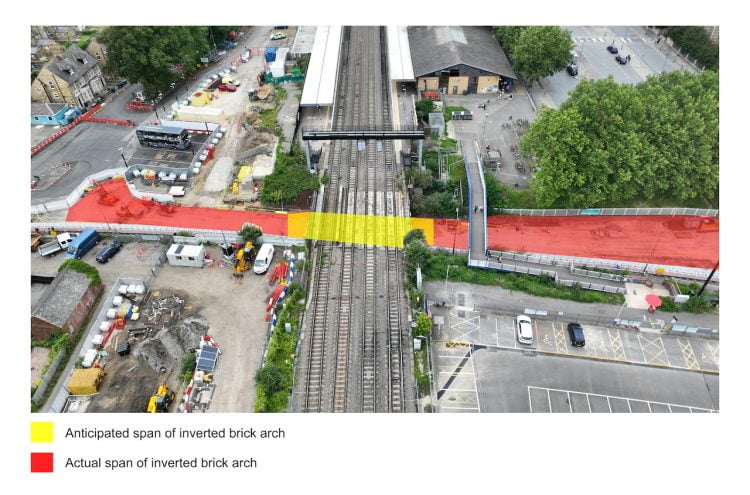June this year saw a Victorian brick archway discovered during a major £161m railway upgrade at Oxford station. July also saw the area evacuated following the discovery of a WWII-era hand grenade close to the railway.
The historical discoveries have created a number of challenges for Network Rail's project team and in order to compensate for the temporary pause in work, 24-hour shifts will be introduced in order to keep the project on track.
Contractors discovered the inverted brick arch under the road at Botley Road bridge with ground investigations revealing that the historic arch is a great deal larger than previously realised at a metre deep and stretching for approximately 100 metres which covers the full length between Mill Street and Frideswide Square.
The fascinating arch is believed to be part of a Victorian water system, according to archaeologists, created to hold river water away from the railway and the city.

The safe removal of the arch has now seen a new schedule drawn up before Network Rail and contractors, Kier Group, can move forward with diverting utilities under Botley Road. This work will see piles installed to support the bridge and will now involve 24-hour, seven days a week shifts. Whilst this major work is underway, a temporary drainage system will be put in place in order to manage groundwater ahead of the installation of a brand new permanent pumping system later during the project.
Monday the 14th of August will see the team of engineers work from 7am to 7pm on-site and from Saturday the 2nd of September, round-the-clock work will begin on the site. In order to keep disturbance for those living close by, the noisiest work will take place during the day. The changes to working have been agreed with Oxford City Council and Oxfordshire County Council.
The huge multi-million-pound upgrade project will involve the railway, Oxford stations and the surrounding local road network in order to provide an improved passenger experience whilst creating better connectivity for the East of Oxford. As part of the Oxfordshire Connect programme, the project will see a bigger and better Oxford station alongside an increased railway supporting more services and shorter journey times for both passengers and freight.
Road networks close to the station will also benefit from the vast programme of work with Botley Road getting safer junctions offering more opportunities for sustainable travel with enhancements supporting bus travel and cyclists and pedestrians will benefit from a four-metre cycle and footway on both sides of the main road.
Philip Morton, project manager at Network Rail, said:
“Whilst we knew the arch was there, it's much larger than our original ground surveys identified, which has added a unique layer of complexity to our ongoing work to upgrade of Oxford station and surrounding areas.”
“Due to its potential significance in supporting the bridge, removing the arch from beneath Botley Road is now our biggest challenge, but we're addressing it as safely and efficiently as possible.”
“Following further investigations, our new work plan involves installing piles to stabilise the bridge while we excavate the brickwork before we can continue to divert the utilities.”
“Going forward, we will be working day and night so we can gain back some of the time lost, with the majority of the noisy work planned to take place during the day, to minimise disruption for the local community. As ever, we appreciate everyone's patience while we manage this unexpected challenge.”
Mark Dodd of Oxford Archaeology, said:
“The historic city of Oxford contains archaeological remains dating back to the prehistoric period, so there's always the potential to discover a bit of history beneath the ground.”
“Owing to the existing road, the site itself wasn't an ideal location for archaeology, so the best approach was for us to be on site whilst the works are underway. It's likely the arch was used to help manage the groundwater owing to its low-lying position close to the river Thames and this is an excellent example of a Victorian engineering solution, as seen elsewhere throughout Britain at this time.”